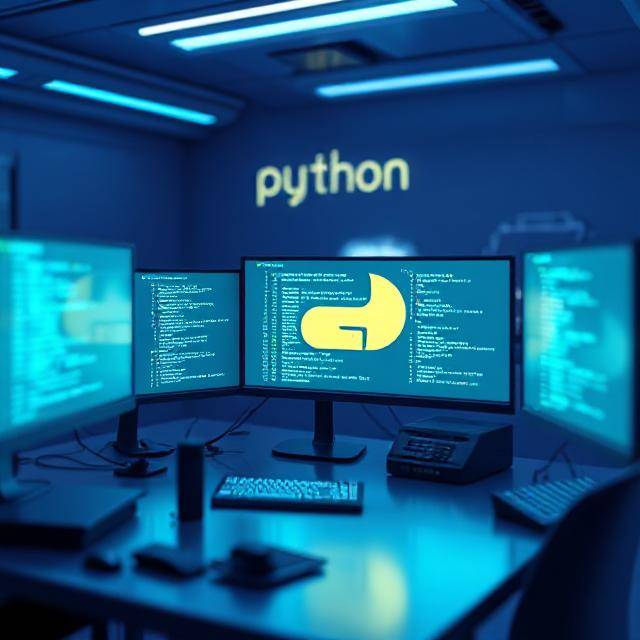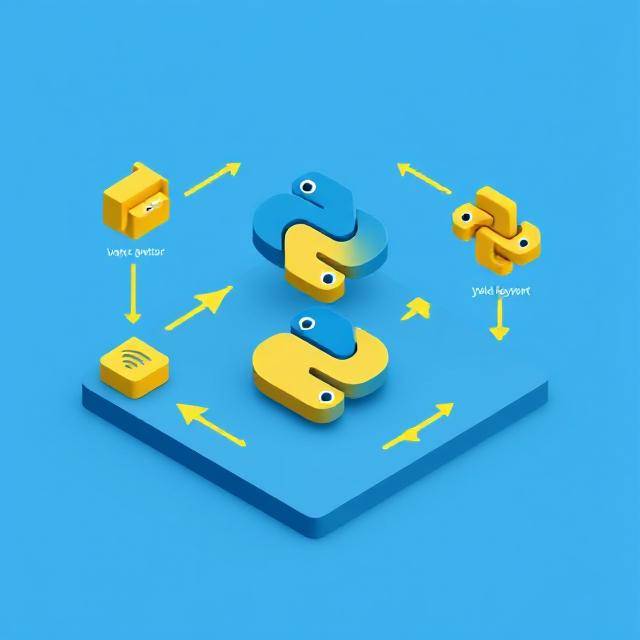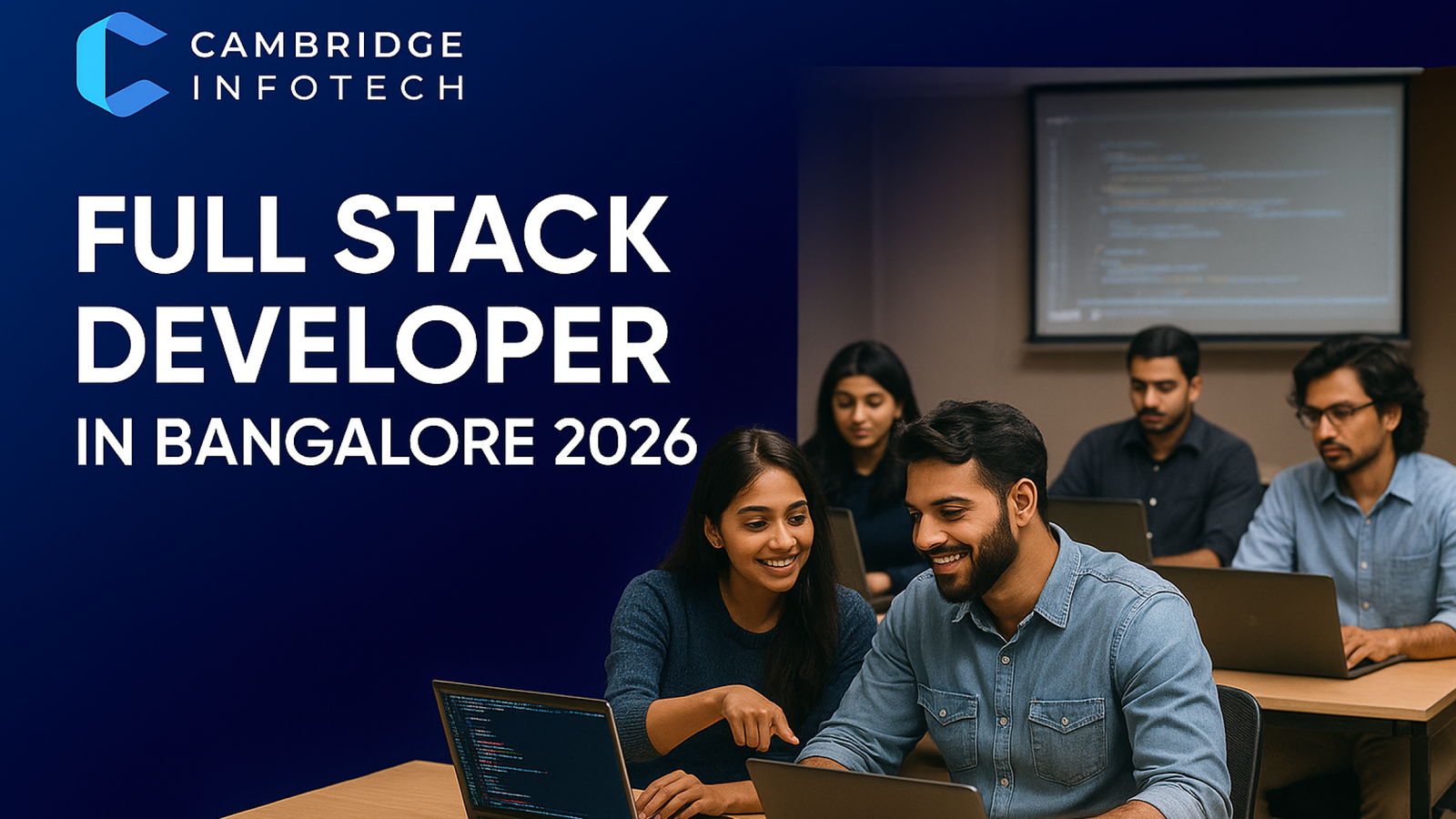Advanced Python Programming 2026 Masterclass: The Proven Path to Building Intelligent Applications

Introduction
Advanced Python Programming 2026 is transforming the way developers build intelligent, scalable, and high-performance applications. As Python continues to lead in fields like AI, data science, automation, and web development, mastering its advanced concepts is now essential for any serious programmer.
In this complete guide by Cambridge Infotech, you’ll explore the most powerful Python techniques — from async functions and decorators to data optimization and real-world project integration. Whether you’re an aspiring data scientist or an experienced developer, learning Advanced Python Programming 2026 will give you the competitive edge you need to thrive in the tech world.
What Is Advanced Python Programming 2026?
Advanced Python Programming 2026 goes beyond loops and functions — it’s about mastering object-oriented design, asynchronous execution, decorators, and generators. These advanced concepts empower developers to create efficient, optimized, and production-ready applications.
By learning these skills, you prepare yourself for a world where automation, AI, and data processing require smarter, more powerful code.
Why You Should Learn Advanced Python Programming 2026
The tech world in 2026 demands professionals who can solve complex problems using Python’s most powerful tools.
By mastering Advanced Python Programming 2026, you’ll:
Write cleaner, reusable, and faster code.
Improve scalability in your applications.
Build asynchronous and multithreaded systems.
Gain a competitive advantage in the job market.
Python’s flexibility means that these advanced techniques apply to every field — from data science to web frameworks like Django and FastAPI.
Key Concepts in Advanced Python Programming 2026
Here are the most important areas to master:
a. Decorators and Generators
Decorators let you modify function behavior dynamically, while generators make your code memory-efficient using yield. Together, they form the foundation of Advanced Python Programming 2026.
b. Asynchronous Programming
Async and Await are critical for high-performance apps. Understanding asynchronous concepts helps developers handle thousands of requests without performance bottlenecks.
c. Object-Oriented and Functional Programming
Advanced design patterns, multiple inheritance, and modular programming enhance your Python architecture for scalability and performance.
d. Memory Management and Optimization
Efficient use of memory, garbage collection, and profiling tools ensures your programs run smoothly — a core part of Advanced Python Programming 2026.
Iterators — How Loops Work Under the Hood
Every for loop in Python uses an iterator — an object that returns items one by one until StopIteration is raised.
Understanding iterators is vital for custom data processing and building efficient loops.
Generators — Building Memory-Efficient Sequences
Generators simplify iterator creation and help you work with huge datasets without consuming much memory.
Why use generators?
Process large files stream-by-stream
Create infinite sequences
Save RAM in data pipelines
Check out Real Python’s guide on Generators
Decorators — Adding Functionality Without Changing Code
Decorators let you wrap functions with extra features — like logging, timing or authentication — without modifying their source.
Common uses: logging, validation, memorization, access control.
Closures — Maintaining State Like a Pro
Closures allow functions to “remember” variables from their enclosing scope.
They are the foundation for decorators and encapsulated stateful logic.
Context Managers — Resource Handling with with
Use context managers to automatically set up and tear down resources like files or connections.
They improve readability and prevent resource leaks.
Async & Concurrency — The Future of Python
Async programming lets you run tasks in parallel — crucial for I/O-heavy apps.
Use asyncio for network calls and I/O; use multiprocessing for CPU-bound work.
Type Hints — Adding Static Safety to Dynamic Code
Type hints make Python code safer and more maintainable.
They help tools like mypy detect errors before runtime and improve IDE autocompletion.
Performance Optimization — Writing Faster Python
Optimization is about efficiency, not just speed. Profile before you tune.
Tips:
Use
cProfileandtimeitto find bottlenecks.Use
functools.lru_cachefor memoization.Leverage NumPy for numerical tasks.
Avoid re-creating lists in loops.
Choose better data structures (
set,dict).
Metaclasses — Mastering Class Creation
Metaclasses let you customize class behavior — they’re used in ORMs, frameworks and DSLs.
Use metaclasses sparingly — prefer decorators and factories for simplicity.
Best Practices for Advanced Python Developers
Follow PEP 8 Style Guide
Use virtual environments (
venv,poetry)Document with docstrings and type hints
Replace
print()withloggingWrite tests with
pytestKeep functions small and modular
Tools & Libraries for Advanced Python Programming 2026
Asyncio – For concurrency and async tasks.
Multiprocessing – To execute parallel processes efficiently.
Decorators & Context Managers – To handle advanced control flows.
NumPy, Pandas, TensorFlow, and FastAPI – Industry-standard libraries for real-world Python development.
Career Benefits of Learning Advanced Python Programming 2026
By mastering Advanced Python Programming 2026, you gain the skill set to pursue roles like:
These roles rely heavily on Python’s advanced libraries, frameworks, and performance capabilities.
Learning Path to Master Python in 2026
Follow this step-by-step roadmap:
Strengthen your understanding of OOP principles.
Learn decorators, async features, and metaclasses.
Build mini-projects using asyncio or FastAPI.
Create data pipelines and automation scripts.
Join Cambridge Infotech’s Advanced Python Programming 2026 Course for expert mentorship and real-world experience.
Frequently Asked Questions about Advanced Python Programming 2026
Q1. What is Advanced Python used for?
Advanced Python is widely used to build high-performance, scalable, and complex applications across multiple domains. Developers use it in areas such as artificial intelligence (AI), machine learning (ML), web development, data analytics, automation, and software testing.
It allows professionals to write cleaner, faster, and more maintainable code using concepts like decorators, generators, multithreading, asynchronous programming, and object-oriented design.
For example, frameworks like Django and FastAPI rely on these advanced concepts to deliver high-speed, production-ready applications that power major tech platforms.
Q2. Is Advanced Python important for Data Science?
Absolutely — mastering Advanced Python is essential for any Data Science professional. Python powers most data workflows, from data cleaning and transformation to model building and deployment.
By learning advanced topics such as iterators, context managers, decorators, and asynchronous I/O, data scientists can write more efficient and optimized code that handles large datasets with ease.
Libraries like NumPy, Pandas, Scikit-learn, and TensorFlow all require a solid understanding of Python’s advanced features to use them effectively.
In short, Advanced Python bridges the gap between being a Python user and becoming a true Data Science expert.
Q3. How long does it take to learn Advanced Python?
The time required to learn Advanced Python depends on your current skill level and consistency.
For those with basic Python knowledge, 2 to 3 months of dedicated practice (around 1–2 hours daily) is enough to grasp key advanced topics like OOP, async/await, and decorators.
Learners aiming for specialization in data science, AI, or web frameworks may need an additional few months of applied learning.
The key is hands-on coding — work on real-world projects, solve advanced challenges, and explore open-source contributions to deepen your understanding.
Q4. What should I learn after Advanced Python?
After mastering Advanced Python, you can expand your skillset based on your career goals:
Web Development: Learn frameworks like Django or FastAPI to build scalable web applications.
Data Science & AI: Explore NumPy, Pandas, TensorFlow, PyTorch, and Scikit-learn for data modeling and AI development.
Automation & DevOps: Get familiar with Selenium, Ansible, or Docker for automating workflows and deployment.
Cybersecurity & Scripting: Dive into network programming, ethical hacking, and automation scripts to build practical utilities.
Each of these paths leverages your Advanced Python skills and helps you grow into a specialized, high-demand developer.
Q5. Where can I read more about Advanced Python?
For in-depth learning and official resources, check out these trusted links:
Official Python Documentation: The most comprehensive guide for Python features and libraries.
Cambridge Infotech’s Advanced Python Course: A structured, hands-on learning path designed to help you master real-world Python applications with expert mentoring.
Real Python Tutorials: High-quality articles and project-based examples for continuous learning.
These resources provide everything you need to continue your journey from intermediate to advanced Python developer.
Conclusion — Your Next Step in Python Mastery
Mastering Advanced Python Programming 2026 is more than just learning new syntax or libraries — it’s about transforming the way you think, design, and solve problems as a developer. By diving deep into advanced concepts like asynchronous programming, decorators, generators, and object-oriented design, you evolve from simply writing code to crafting efficient, scalable, and elegant software solutions.
In today’s fast-paced tech world, companies are searching for professionals who can handle real-world challenges using Python’s full potential. Whether you’re aiming to become a Backend Engineer, Data Scientist, Automation Architect, or AI Developer, mastering Advanced Python Programming 2026 gives you the confidence and skill set to lead projects that matter.
These advanced skills also open doors to exciting career opportunities in fields such as:
Web Development using frameworks like Django and FastAPI
At Cambridge Infotech, we believe learning should be hands-on, future-focused, and career-driven. That’s why our Advanced Python Programming Course 2026 is designed to give you not just theoretical knowledge, but practical experience through projects, mentorship, and real-world applications.
So, take your next step today — start mastering Advanced Python Programming 2026, and unlock your full potential in the ever-evolving world of technology.
Ready to become a Python expert?
Join Cambridge Infotech’s Advanced Python Programming 2026 Course now and turn your passion for coding into a professional advantage.
Enroll Now →
Related Blogs
The Ultimate #1 IT Institute in Kammanahalli – Build Your Successful Future with Cambridge Infotech
The Most Powerful Artificial Intelligence Topics In ( 2025 )








